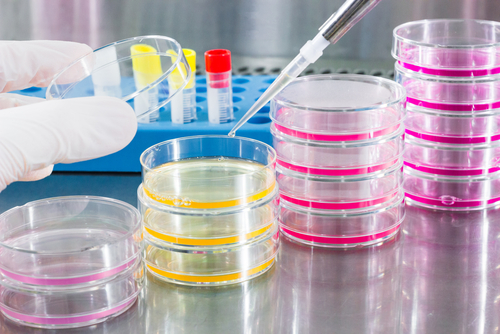Study Reveals Possible Reason for Women’s Higher Risk of PAH

Women’s pulmonary artery muscle cells produce more of a signal molecule called hypoxia-inducible factor 1-alpha (HIF1α), which may contribute to the higher prevalence of pulmonary arterial hypertension (PAH) in women compared to men, a study reports.
The data also suggest that a component of the cell’s scaffold along with HIF1α may be potential targets to help treat PAH.
The study, “Influence of 2‐Methoxyestradiol and Sex on Hypoxia‐Induced Pulmonary Hypertension and Hypoxia‐Inducible Factor‐1‐α” was published in the Journal of the American Heart Association.
Women have a greater risk of developing PAH, with the disease being at least 2.5 times more common in women than in men. Several studies have supported a role for the female hormone estrogen and its natural derivatives in the development of PAH.
Estrogen and some of its derived molecules are known to promote the proliferation of pulmonary artery smooth muscle cells (PASMCs), contributing to the progression of PAH. In contrast, other estrogen derivatives, such as 2‐methoxyestradiol (2ME2), seem to arrest proliferation and play a protective role.
Some studies have shown that treatment with 2ME2 can reverse PH-like disease in rat models. But to date, the mechanism of action behind 2ME2’s protective effect is not clear.
A group led by professor Margaret MacLean at Scotland’s University of Glasgow was interested in investigating one hypothesis to explain this protective effect. They reasoned that there are differences between females and males in the production of HIF1α, and that 2ME2’s beneficial effects are mediated by this molecule.
HIF1α is a crucial player in many cellular functions, and a stimulator of cell proliferation. It has already been proposed to be involved in the development of PAH.
Researchers assessed the levels and activity of HIF1α signaling in male and female human PASMCs. The cells were isolated from non-PAH patients, and cultured in the laboratory.
The effects of 2ME2 were also determined in female and male rat models of PH — the chronic hypoxic rat model.
Results showed that HIF1α protein is more abundant in human female PASMCs, apparently due to a lesser ability of female cells to degrade it.
In the PH rat model, treatment with 2ME2 reversed the signs of pulmonary hypertension regardless of sex. Noticeably, 2ME2’s anti-PH effect was accompanied by a reduction in the amount of HIF1α protein, both in the lungs and PASMCs of rats.
A similar effect was confirmed in human cells, as 2ME2 treatment prevented human PASMCs from replicating and reduced HIF1α protein levels.
Additionally, 2ME2 was able to stimulate some cell death pathways and disrupt a component of the cell’s scaffold, known as the microtubule cytoskeleton, particularly one of its components called alpha-tubulin.
Researchers believe that 2ME2’s effect on the microtubule structure is likely the reason behind the reduced levels of HIF1α and its anti-proliferative effect.
Overall, the findings provide evidence that a greater expression of HIF1α in women’s lung arteries may “predispose females to a state of increased proliferative capacity and contribute to pulmonary artery wall remodeling,” playing a role in their higher propensity for developing PAH.
The results also showed that 2ME2 “is an effective inhibitor of HIF1α, both in vivo and in vitro,” and suggested that “disrupting the microtubule structure in PAMSCs and inhibiting HIF1α may be plausible therapeutic targets for PAH.”







